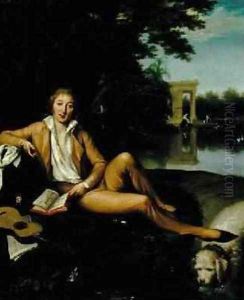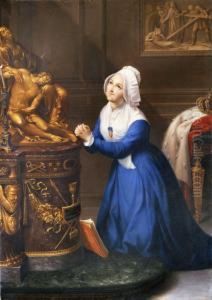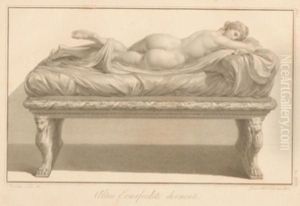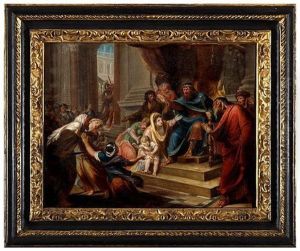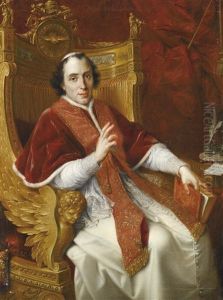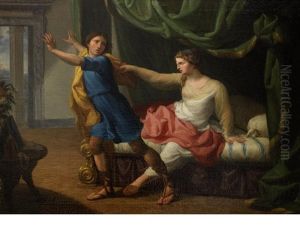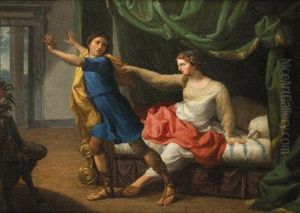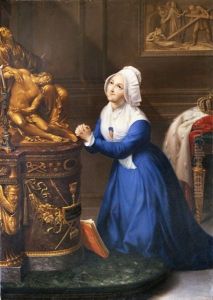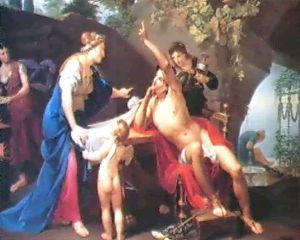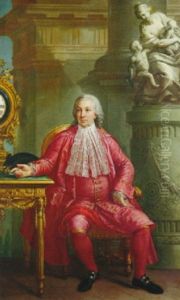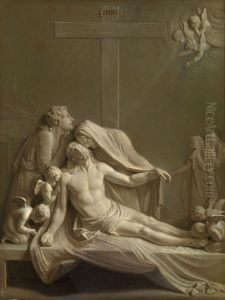Bernardino Nocchi Paintings
Bernardino Nocchi was an Italian painter, born in 1741 in Pistoia, Tuscany. He was a prominent artist known for his work in the Neoclassical style, which became increasingly popular during the latter half of the 18th century, as a reaction against the ornate Rococo style. Nocchi's contributions to art were significant during the period of the Grand Tour, when many European aristocrats and wealthy individuals traveled to Italy to immerse themselves in classical art and culture.
Nocchi was initially trained by his father, who was also a painter, before moving to Rome to further his studies. In Rome, he became a protégé of the influential Scottish artist Gavin Hamilton, who was a central figure in the Neoclassical movement and played a pivotal role in shaping Nocchi's artistic direction. Through Hamilton, Nocchi was exposed to the classical antiquities and the works of Renaissance masters, which greatly influenced his style and technique.
During his career, Nocchi received commissions from various patrons, including members of the Catholic Church and European nobility. He was particularly known for his religious and mythological scenes, which were marked by clear composition, precise draftsmanship, and a sense of harmony inspired by classical ideals. Nocchi's paintings often featured figures rendered with a sculptural quality, reflecting the influence of classical sculpture on Neoclassical painting.
Bernardino Nocchi's reputation spread beyond Italy, and his works were collected by art connoisseurs across Europe. Despite his success, there is relatively less information about his personal life compared to his contemporaries. Nocchi continued to paint and contribute to the Italian art scene until his death in 1804. Today, his works can be found in various art museums and private collections, and he is remembered as a skilled exponent of the Neoclassical style during a period of significant cultural and artistic change in Europe.
